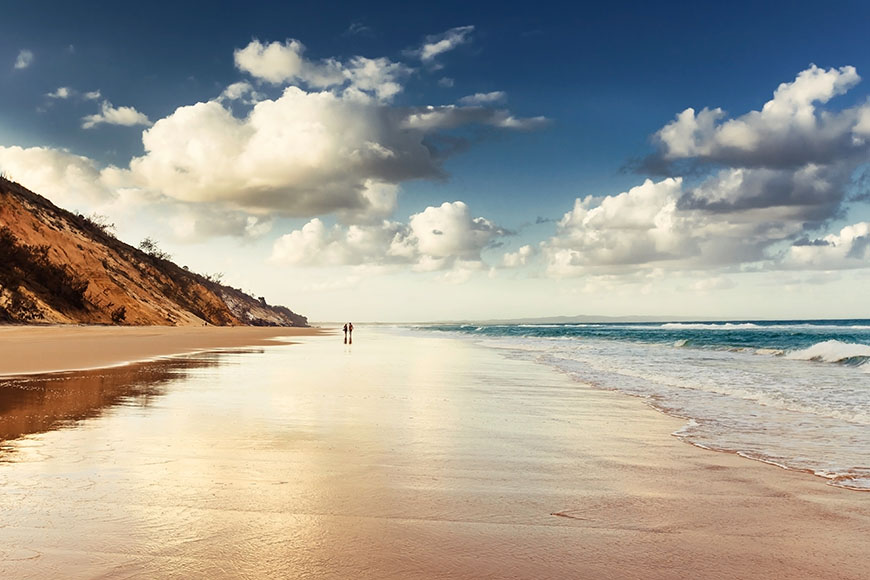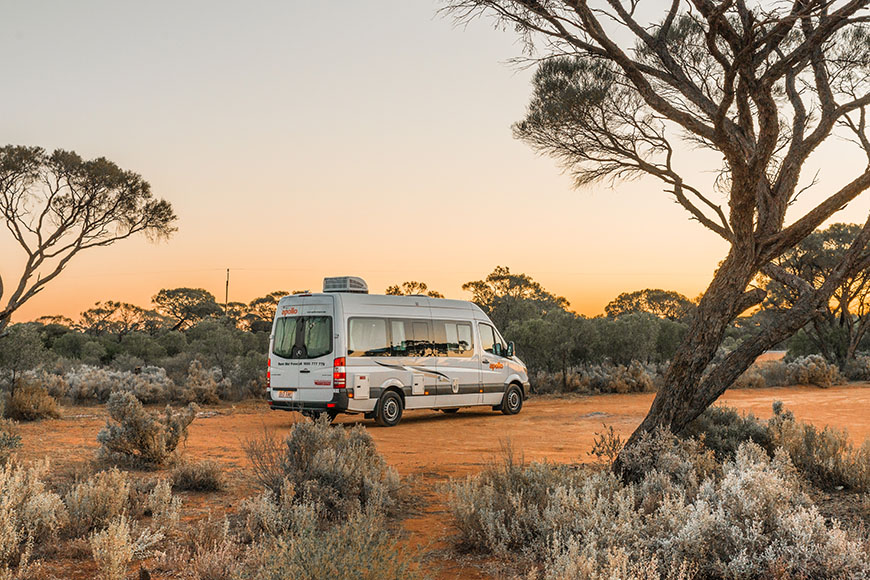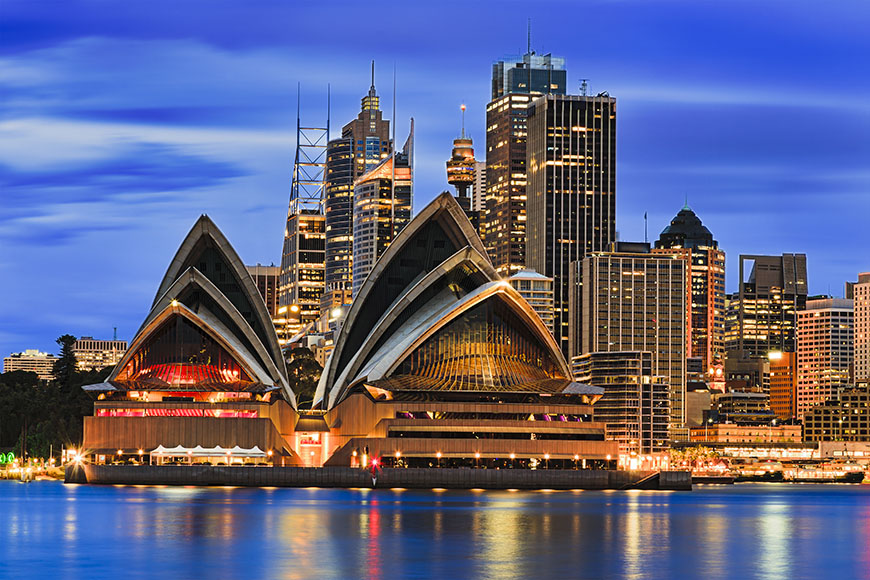Traveling to Australia is a pricey proposition—the airfare alone could bust your budget, and the sheer length of the flight encourages most visitors to stretch their visit for well over a week (it’ll take you that long just to get over the jet lag). So is it really possible to travel Australia for cheap?
It may not be as difficult as you think. Below are 25 ways to help you save money on every aspect of your trip to Australia, including info on cheap eats, discount cards, fun freebies, and more.
How to Get to Australia for Cheap
1. Do your homework. One of the biggest expenses of any Australia trip is the airfare to get there. As you hunt for bargains, be sure to check a variety of flight search sites for comparison shopping purposes, and consider signing up for fare alerts from Airfarewatchdog, SmarterTravel’s sister site, to get notified when prices drop.
2. Time your visit. Airfare is typically most expensive between December and February, which is summer in Australia and the most popular time to visit places like Sydney and Melbourne. You’ll likely find lower fares during the shoulder seasons (spring and fall) or during the winter off-season.
3. Consider a flight package. Qantas offers Explorer fares that include round-trip airfare to Australia as well as several domestic flights within the country. Prices are based on season and how far you plan to fly within Australia.
Australia Trip Planning

4. Keep your focus. Australia is enormous—nearly the size of the continental U.S. You wouldn’t try to see the entire U.S. in two weeks, so don’t attempt to do it in Australia either. If you have limited time for your trip, fix your sights on one or two regions and explore them thoroughly—you’ll have a more relaxing experience, and save both time and money on transportation.
5. Consider a cruise. If you’re looking to see a variety of destinations without having to unpack more than once, a cruise is a cost-efficient and convenient option. There are Australia cruises that cost less than $100 per person, per night; these rates include accommodations, meals, entertainment, and transportation from each port to the next. Royal Caribbean, Princess, and Holland America are just a few of the lines you could consider. See the best sites to book a cruise for comparison shopping.
6. Look for freebies. Australia has a wealth of museums and attractions that don’t charge admission fees—like the Art Gallery of New South Wales in Sydney and the Brisbane Botanic Gardens.
7. Buy a discount card. You can purchase an iVenture Card for popular tourist destinations like Sydney, Melbourne, and Tasmania. The cards include free entry to many area attractions, as well as special offers and discounts, for a single price. These cards may save you money if you’re doing a lot of sightseeing in a short period of time.
Money Management in Australia
8. Lock in your rate. International exchange rates are constantly fluctuating, and they’re not always in your favor. The best way to control costs and stick to your budget is to prepay for your hotels, airfare, and tour packages in advance—preferably in your own currency—so that last-minute fluctuations don’t send your budget ballooning.
9. Skip the exchange counter. You’ll get the best exchange rates by using your credit card or withdrawing money from an ATM; that’s because you’ll be exchanging money at interbank rates, which tend to be better than the rates exchange bureaus charge. ATMs can be found just about everywhere in Australia except the most remote towns and villages, and credit cards are accepted at many stores and restaurants. But beware of fees—many banks will charge you to withdraw money at a foreign ATM or make a purchase in a foreign currency. One exception is Capital One, which doesn’t charge its American cardholders a fee for foreign purchases. For more information, see The Best Way to Carry Money Overseas.
10. Negotiate a better deal. Haggling is always in style at Australia’s open-air markets—you can negotiate great deals at places like Paddington Markets, the Rocks Markets, and the Bondi Markets, all in Sydney.
11. Get a refund. If you purchase $300 AUD or more in goods from a single retailer, you are eligible for a refund of the goods and services tax (GST) that you paid on those items. You must get an original tax invoice from the store where you made the purchase and present it when you depart Australia. For more information, click here.
How to Save on Australia Transportation

12. Check the discount airlines. Thanks to Australia’s sheer size, the quickest way to get around the country is by air. Australia has a number of discount airlines that provide affordably priced domestic flights, including Jetstar, Regional Express (REX), and Tigerair. (Be sure to check which baggage fees and other charges might apply on these airlines, as they could cancel out any fare savings.)
13. Take the bus. If you’ve got time to spare or if you’re focusing your travels on a relatively small region, hopping on a bus to your next city may be your cheapest option. Greyhound Australia offers a variety of specials, including discounts for seniors, kids, and students. For extended travel, consider a bus pass.
14. Get a free campervan rental. Traveling by campervan is one of the most popular ways to see the country, but one-way rentals can be expensive if you’re traveling from one part of Australia to another. Use Transfercar to find vehicles that need to be relocated, and you can often drive one for free.
15. Use public transit for free. A number of Australian cities have made select public transportation routes free to the public. For example, Brisbane has free service on several bus routes in the city center, while Perth offers free transit on buses and trains within a certain city zone. Melbourne also has a free tram zone.
16. Travel at a discount. If you’ll be spending time in Australian cities, keep an eye out for public transportation discount cards such as Sydney’s Opal card, which offers discounts and a cap on your maximum daily and fares, no matter how many times you use the transit system. These passes can save you money over individually priced tickets.
17. Think outside the tour. Why pay for a pricey sightseeing cruise around Sydney’s harbor when you could enjoy the same scenic views from a Sydney public ferry for about a third of the price?
How to Save on Meals in Australia
18. Go grocery shopping. Buy your food where the locals do: at supermarkets. Instead of paying for your hotel’s pricey breakfast, pick up a loaf of fresh bread at the local market and keep it in your room for a morning meal. Add some meat and cheese and you’ve got yourself a picnic lunch.
19. Don’t overtip. Tipping is generally not required in Australia, though it’s growing more common in restaurants. If you’re pleased with your waiter or waitress, a 10 percent tip will be appreciated. Tipping is not necessary at bars, though you can round your bill up if you’d like.
20. Find cheap eats. Skip the touristy restaurants and follow the locals to places where you can find great food at a great value. Think ethnic restaurants—Thai food is cheap, plentiful, and popular in cities like Sydney and Melbourne, as is takeaway sushi. Department store food halls are also a good bet for quick, inexpensive meals. In smaller towns along the coast, look for little joints offering the ubiquitous fish and chips.
How to Save on Australia Lodging

21. Consider a home- or farmstay. Staying in a family home or on a working farm offers a wonderful way to interact with locals and get a genuine feel for what it’s like to live Down Under. Find farmstays on sites such as FarmStayPlanet and Downunder Farmstays. You can find rooms in people’s homes on Airbnb or Homestay.com.
22. Consider a vacation rental. Particularly if you’re traveling with a family or group, a vacation rental could save you money over a hotel stay by giving you more space for less money, and by offering a kitchen where you can cook your own meals instead of eating out. Find one on these vacation rental sites.
23. Look into hostels. Contrary to popular belief, hostels aren’t just for 21-year-old backpackers. Many Australian hostels offer private rooms and even private bathrooms—so if you don’t mind basic accommodations, they can be a cheap and comfortable alternative to fancier hotel rooms. See Hostelworld.com.
24. Swap your home. A home exchange is perhaps the cheapest way to stay in Australia—you stay in an Australian’s house for free while he or she stays in yours. Often you’ll have use of your exchange partner’s car during your stay, which will save you money on transportation. Read more in SmarterTravel’s article on home exchange.
25. Go camping. Australia has some of the world’s most scenic and well-maintained campgrounds and caravan parks. Renting an RV gives you the freedom to drive yourself around the country, as well as a cozy and inexpensive place to sleep each night. Find campsites at AustralianCampsites.com.au.
More from SmarterTravel:
- Getting Around Australia: Transportation Tips
- Where to Stay in Australia: Lodging Tips
- 12 Underrated Beach Towns in Australia
Follow Sarah Schlichter on Twitter @TravelEditor for more travel tips and inspiration.
Editor’s note: This story was originally published in 2017. It has been updated to reflect the most current information.
We hand-pick everything we recommend and select items through testing and reviews. Some products are sent to us free of charge with no incentive to offer a favorable review. We offer our unbiased opinions and do not accept compensation to review products. All items are in stock and prices are accurate at the time of publication. If you buy something through our links, we may earn a commission.
Related
Top Fares From
Today's Top Travel Deals
Brought to you by ShermansTravel
France: 8-Night Paris, Avignon & Nice...
Infinity Worldwide Vacations
 vacation
$2880+
vacation
$2880+
Poconos: 3 Nts in Garden of...
ResortsAndLodges.com
 hotel
$305+
hotel
$305+
7-Nt Canada & New England Cruise,...
Princess Cruises
 cruise
$839+
cruise
$839+




